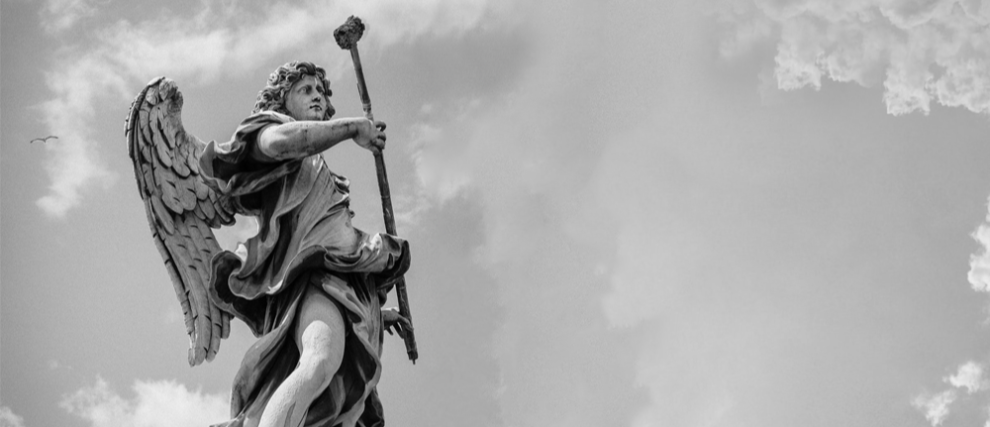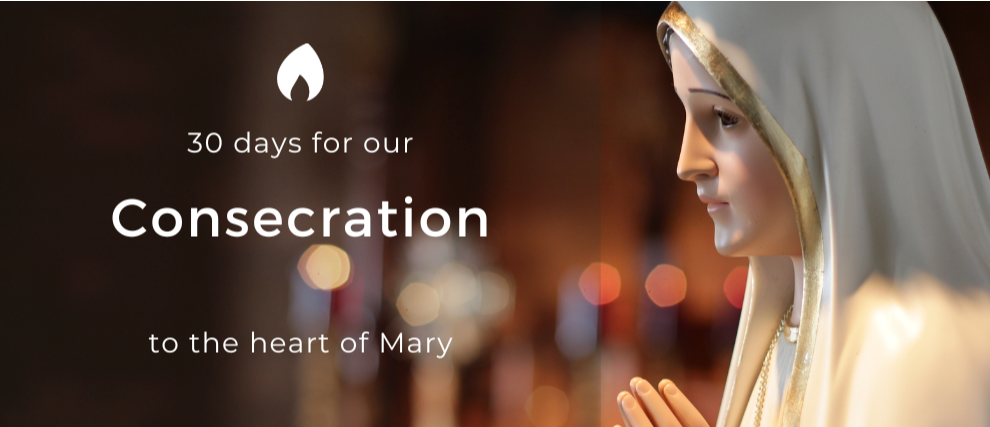Saint Hildegard of Bingen
Biography of Hildegard of Bingen
Writer, composer, philosopher, naturopath, Christian mystic… What gifts and talents were given to the Abbess Hildegard of Bingen! Indeed, Hildegarde de Bingen is renowned for her impressive universal genius.
She was born in 1098 in Bermersheim vor der Höhe (now in the state of Rhineland-Palatinate, West Germany). Her family is said to have been in contact with the county government of Spanheim.
Hildegarde's health during her childhood was rather weak. She experienced visions from an early age, the mystical nature of which she identified later in her life. At the age of seventy-seven, she described them in a letter to her companion, the Benedictine monk Saint Guibert de Gembloux: she refers to umbra viventis lucis (the reflection of living light) the spirituality in which she is immersed during her visions: “just as water reflects the sun, the moon and the stars; so scripture, sermons, virtues and certain human actions take shape for me and emanate a strong glow”.
History is not very clear as to the age at which Hildegarde von Bingen joined the orders: her hagiography (from the Greek hagio, “saint”, the word designates a biographical work of a saint), “Vita sanctae hildegardis”, supplemented by the monk Theodoric of Echternach, tells that her parents offered her as an Oblate at the monastery of the Benedictine sisters of Disibodenberg at the age of eight: she was placed there under the tutelage of the Anachoretic Jutta von Sponheim. Blessed Jutta of Sponheim was the noble daughter of Count Rehan Stephen of Sponheim, who joined the hermitage of Disibodenberg to live a life of isolation of contemplation. In the cell with Jutta, Hildegarde learned to read, write, sing the Opus Dei and play the zither. At the age of 14, Hildegarde de Bingen spoke her religious vows and took the habit. She only shared her visions with Jutta, who herself informed the monk Volmar of Disibodenberg, another guardian of Hildegard.
Having revealed her mystical talents to the world later in her life, we now have little information about Saint Hildegard's youth in the convent.
After the death of Jutta de Sponheim, Hildegarde de Bingen took her place as the abbess of the Disibodenberg Sisters' community. She was then 38 years old. Later, in order to gain more independence, she decided to move the community to the monastery of Rupertsberg, on the banks of the Rhine. This undertaking was first challenged by Abbot Kuno von Disibodenberg. This refusal plunges her into a deep difficulty: she became paralyzed. Interpreting the sudden illness of Hildegard as a manifestation of God's dissatisfaction, the Abbot finally agreed to let her go.
Saint Hildegard thus founded Ruppertsberg Abbey in 1150, accompanied by Volmar, who served as her secretary and scribe. She later founded the abbey of Eibingen in 1165. After a surprisingly long life, filled with devotion and profound mysticism, Hildegard of Bingen died on September 17th, 1179 in Rupertsberg.
The mystical work of Saint Hildegard of Bingen
The year 1141 marks a turning point in the life of Hildegard of Bingen. At the age of 42, she experienced a great spiritual awakening during a vision in which God gave her the order to write down everything she saw and felt. Nevertheless, beset by doubt, she hesitated for a long time to do so, and this plunged her into a deep physical and mental evil. However, the reputation of Hildegard of Bingen did not go unnoticed by the ecclesiastical body of the time: after Hildegard of Bingen asked Father Bernard of Clairvaux for advice, he in turn sent word of the abbess back to Pope Eugene III. The two men granted her their blessing to write her work.
The writings of Hildegard of Bingen
Hildegard of Bingen is the author of three great mystical works: Scivias, which she wrote between 1151 and 1152, Liber vitae meritorum (1158-1163) and Liber divinorum operum (1163-1174).
Scivias, from “Sci vias domini” means “know the ways of the Lord”. The book includes descriptions of 26 visions. The work relates the events of the Bible, such as Genesis, the arrival and sacrifice of Christ the Saviour, but it also deals with topics such as the role of the Church, the nature of sin, the human condition, etc.
Liber vitae meritorum (the book of the merits of life) mentions human vices and virtues, which are opposed to each other: the attraction of vice against the real and pure beauty of virtue. The book also contains one of the earliest mentions of purgatory.
The Liber divinorum operum, or “book of divine works”, tells of the 10 incredible visions of Hildegard of Bingen, whose nature is truly cosmic: the work explores man's relationship with the universe, it presents deep reflections on Genesis, and the illustration of the universal man contained in the book (a man spreading his arms, standing in the center of a globe) could have been the inspiration for Leonardo da Vinci's famous drawing “The Man of Vitruvius”.
The Codex of Wiesbaden compiles these three mystical works, as well as a collection of letters, homilies, and even the language essays of Hildegard of Bingen (the abbess had tried to create a new language for the writing of her works called lingua ignota, or “unknown language”).
The music of Saint Hildegard of Bingen
The music of Saint Hildegard accompanied or even completed her written works, as is the case for the Ordo Virtutum, a musical piece of which was at the end of the Scivias.
In its complete version, the Ordo Virtutum is a sacred dramatic composition by Hildegard, in which the inner struggle of man, the temptation of evil, the beauty of virtue, and the human soul are presented. This theme of opposition between vice and virtue thus recalls her work Liber vitae meritorum.
In addition, Saint Hildegard is the composer of seventy-nine musical works and liturgical songs. A collection of liturgical songs, antiphones and hymns are compiled in the Symphonia Harmonie Celestium Revelationum. The musical genre lends itself to the sacred monophony.
Hildegarde de Bingen: Doctor of the Church
Although she has been considered a saint for centuries (as Theodoric called her in his hagiography vita sanctae Hildegardis), it is only recently that she has been officially recognized as such by the church. Indeed, the procedure for the canonization of Saint Hildegard had begun in the thirteenth century, but had never been completed. It was not until 2012 that Pope Benedict XVI formalized her title of saint, and proclaimed her a doctor of the church.
Precursor to Natural Science
Physica and causae curae represent an impressive advance in the history of medicine. Of course, our current methods have nothing to do with those described in Hildegard's books, and they have no religious aspect. It is also pertinent to highlight Hildegarde's role as a healer, at a time when her status should not have allowed her to speak on subjects such as medicine or science.
Ancient medicine was based at the time on the theory of humors, which associated the human body with the balance of the four elements (air, water, fire, earth). This notion of balance was taken up and developed by Hildegarde de Bingen in Physica et Causae et curae: the books mention the human body and its relationship with the outside world for the healing of diseases. The use of plants, stones and food to restore inner balance is described in detail and gives an idea of the emergence of concepts of food as a remedy.
Hildegarde de Bingen on Food
Hildegard of Bingen's writings on food are of interest to naturopaths and dieticians today. Bingen's famous “foods of Hildegard's joy” always follow the logic of healing. Taken as a remedy, foods would therefore have properties that would be able to restore balance and “joy” in the human body. While the excess of certain foods or the consumption of bad foods are a blow to this balance, and therefore to “joy”. Here, this joy can be understood as “health”.
The famous ingredients of joy recommended by Hildegarde de Bingen are some fish, some nuts, apples, pears, and especially spelt. Spelt is a grain rich in protein and other vitamins, known for its digestive benefits. In flour, spelt can be used to prepare the famous and delicious biscuits of joy!

